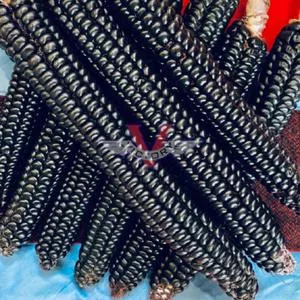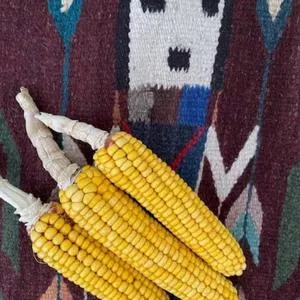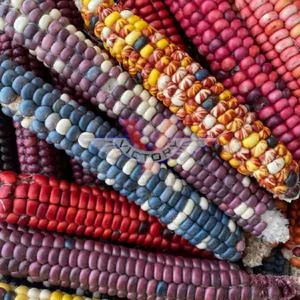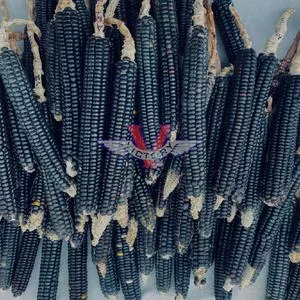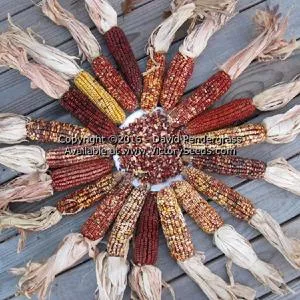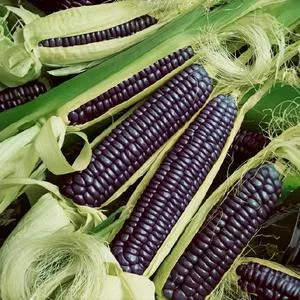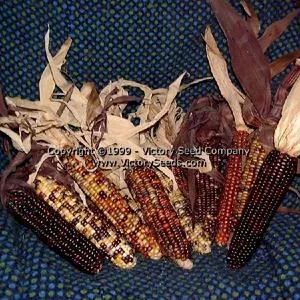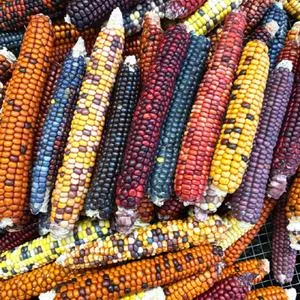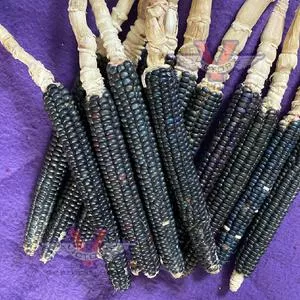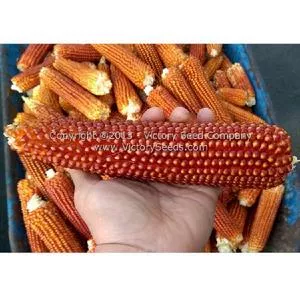Flint / Flour Corn
Zea mays
In Native American lore, maize (or corn as it is commonly called in the U.S.) was one of the "three sisters." Corn seed, along with beans and squash, were planted and grown together, supporting each other in their life cycle and providing a very balanced diet of carbohydrates, proteins and vegetable fats to their cultivators.
Flint corn typically has hard seed coats that with rounded, smooth, kernels consisting of soft starch covered by horny starch[1]. Many "Indian corn" types are flint type. They are well suited for making good quality corn meal or ground and used for livestock feed.
Flour corn is composed almost completely of soft starch with thin seed coats. Kernels are round and smooth like flint corns. In these modern times, they are primarily used for making corn flour. Historically, flour corn was also raised and used for parching. Parching is a process whereby the kernels are gently roasted until they slightly expand, the seed coat splits and the kernels become soft. Parched corn was used as a snack or trail provision and could last several months if stored properly.
You can parch just about any flour corn variety but some are better suited than others. White and yellow varieties are typically the least flavorful parched. Try using the more colorful varieties as then tend to be neither bland nor strong tasting. Many are sweet with flavors that develop further as they are chewed.

